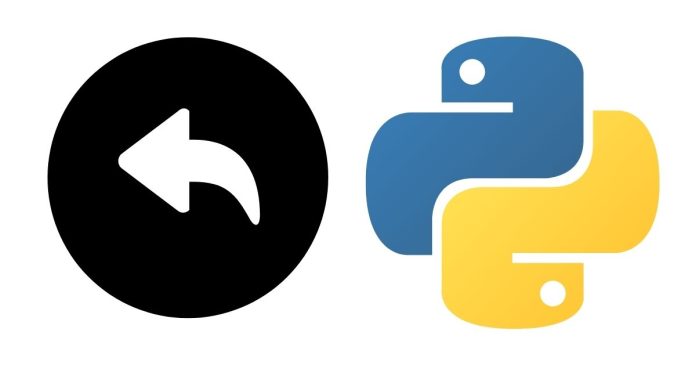Python is a versatile language, and looping backwards is a common requirement in various programming scenarios. Whether you’re working with lists, strings, or custom ranges, Python offers several ways to achieve this. Here’s a detailed look at how to loop backwards in Python.
1. Using range() with a Negative Step
The most straightforward way to loop backwards is by using the range() function with a negative step.
# Looping backwards from 10 to 1
for i in range(10, 0, -1):
print(i)
In this example, the range() function starts at 10 and decreases by 1 until it reaches (but does not include) 0. The general syntax for range(start, stop, step) allows for flexible control over iteration.
2. Using reversed() with a Sequence
The reversed() function provides a clean way to iterate through a sequence in reverse order.
# Looping backwards through a list
my_list = [1, 2, 3, 4, 5]
for item in reversed(my_list):
print(item)
This approach is particularly useful for lists and other sequences where you want to reverse the order without modifying the original data.
3. Using Slicing for Reverse Iteration
Slicing is a powerful feature in Python that can also be used to iterate backwards through a sequence.
# Looping backwards through a string
my_string = “Python”
for char in my_string[::-1]:
print(char)
Here, [::-1] creates a reversed copy of the sequence, and the loop iterates through it.
4. Using a While Loop
While loops provide flexibility and can be used to loop backwards with a manually controlled index.
# Looping backwards using a while loop
n = 10
while n > 0:
print(n)
n -= 1
This approach is particularly useful when you need more complex conditions or dynamic step sizes.
5. Reverse Iteration with Enumerate
If you need both the index and value while iterating backwards, combine reversed() with enumerate().
# Looping backwards with index and value
my_list = [‘a’, ‘b’, ‘c’, ‘d’]
for index, value in enumerate(reversed(my_list)):
print(f”Index: {index}, Value: {value}”)
6. Using reversed() in List Comprehensions
For compact and expressive code, use reversed() in a list comprehension.
# Creating a reversed list
my_list = [1, 2, 3, 4, 5]
reversed_list = [x for x in reversed(my_list)]
print(reversed_list)
Performance Considerations
- Memory Efficiency: The
reversed()function does not create a copy of the sequence; it returns a reverse iterator, making it memory efficient. - Slicing: While slicing is elegant, it creates a new copy of the sequence, which might not be ideal for large datasets.
- Range: Using
range()is efficient and does not require additional memory allocation.
Python provides multiple ways to loop backwards, each suited to different scenarios. Whether you use range(), reversed(), slicing, or a while loop depends on your specific needs and the type of data you’re working with. By understanding these methods, you can write more flexible and efficient Python code.
Have a favorite way to loop backwards in Python? Share your thoughts in the comments below!


